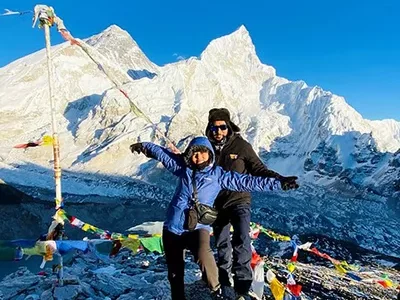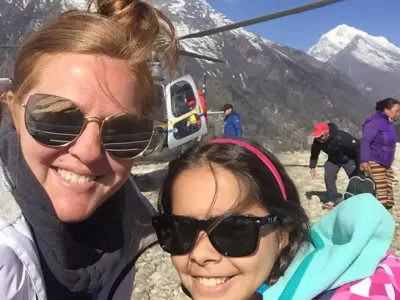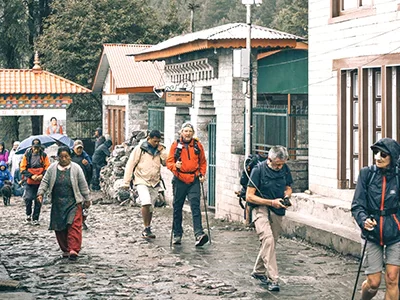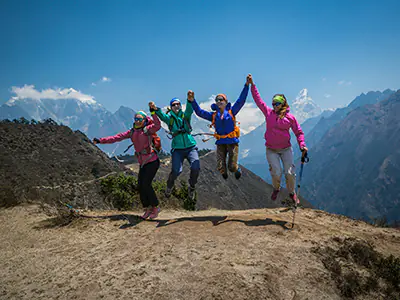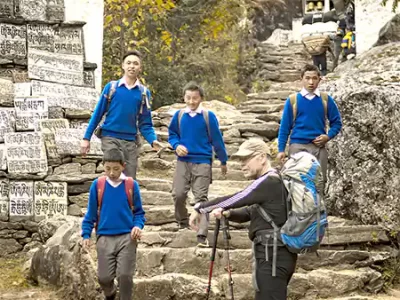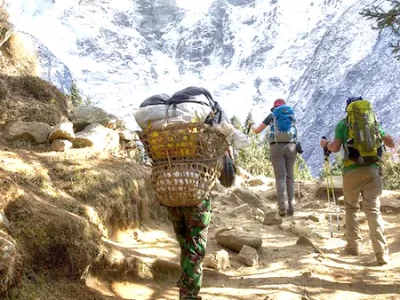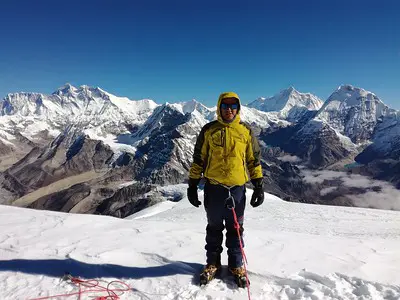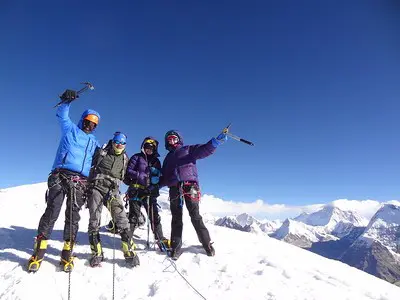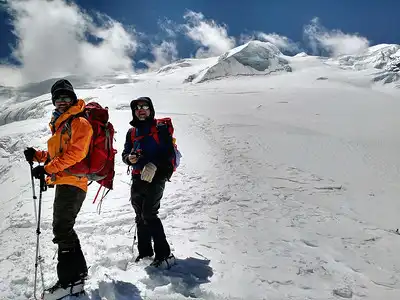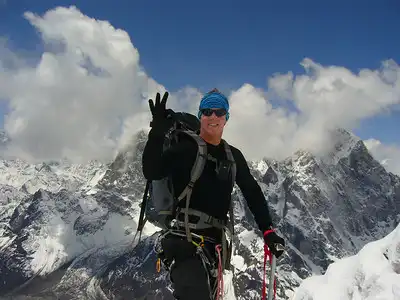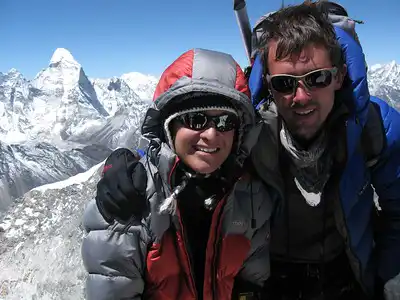Everest Base Camp, nestled amidst the majestic Himalayas, captures the essence of adventure and the irresistible draw of the world’s highest peak. This legendary destination attracts thrill-seekers worldwide, all yearning to witness the raw beauty and conquer the challenges of the Everest region. Whether you’re an experienced trekker or a novice adventurer, the trek to base camp promises an unforgettable experience.
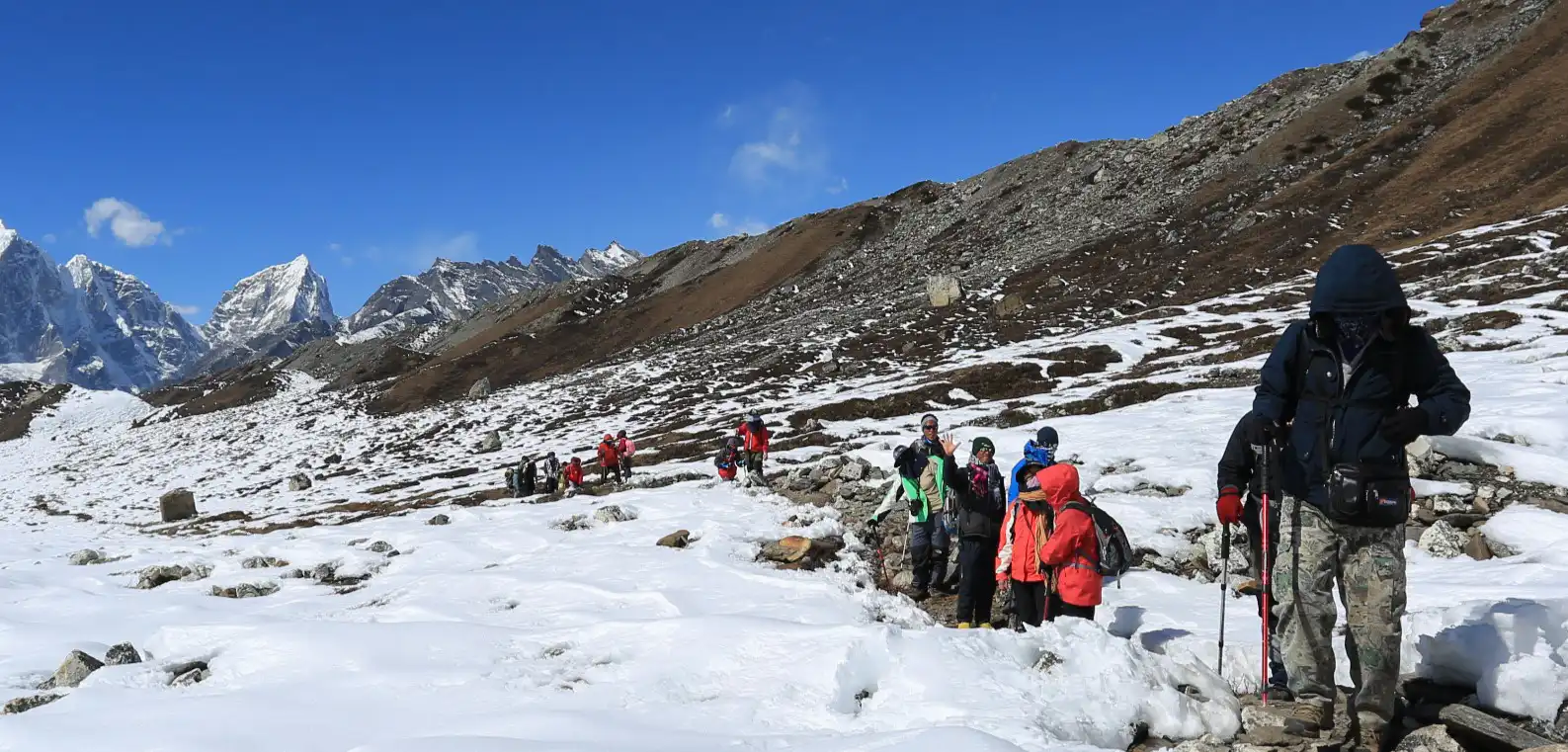
Beyond a physical challenge, the Everest Base Camp trek is a spiritual awakening. Experience the awe-inspiring beauty of nature and the inspiring spirit of those who chase extraordinary goals. Standing in awe of the majestic Everest, surrounded by towering peaks and breathtaking glaciers, leaves an everlasting impression on your soul.
Everest Base Camp: The Gateway to the Summit
Location: Find Everest Base Camp in Nepal, within the Sagarmatha National Park, a UNESCO World Heritage Site.
Launchpad: This crucial starting point marks the beginning of mountaineers’ challenging expeditions to summit Mount Everest.
Twin Base Camps: Two base camps exist on opposite sides of Everest
- South Base Camp: Rests in Nepal at an altitude of 5,364 meters (17,598 ft).
- North Base Camp: Lies in Tibet, China, at 5,150 meters (16,900 ft).
Trekker’s Haven: Thousands of trekkers visit this high-altitude sanctuary annually, in addition to climbers, to soak in the breathtaking Himalayan scenery and unique ambiance.
Symbol of Achievement: Reaching base camp marks a significant milestone for trekkers, showcasing the extraordinary capabilities of the human spirit.
Everest Base Camp Trek
Everest Base Camp Trek with Helicopter Return
Luxury Everest Base Camp Trek
Everest Base Camp: A Historic Gateway to the Summit
Nestled amidst the awe-inspiring Himalayas, Everest Base Camp occupies a unique place in the annals of mountaineering. Let’s explore its captivating history and understand its pivotal role in helping climbers conquer the world’s highest peak.
The Genesis of Everest Base Camp
- Early Explorers: The initial Everest expeditions in the early 20th century set up temporary camps as they ventured higher up the mountain.
- Permanent Havens: As expeditions grew more frequent and organized, the idea of a permanent base camp took shape.
- Nepal’s Base Camp: The South Base Camp in Nepal, a landmark since the 1950s, owes much of its renown to Hillary and Norgay’s historic 1953 Everest summit.
- Tibet’s Base Camp:
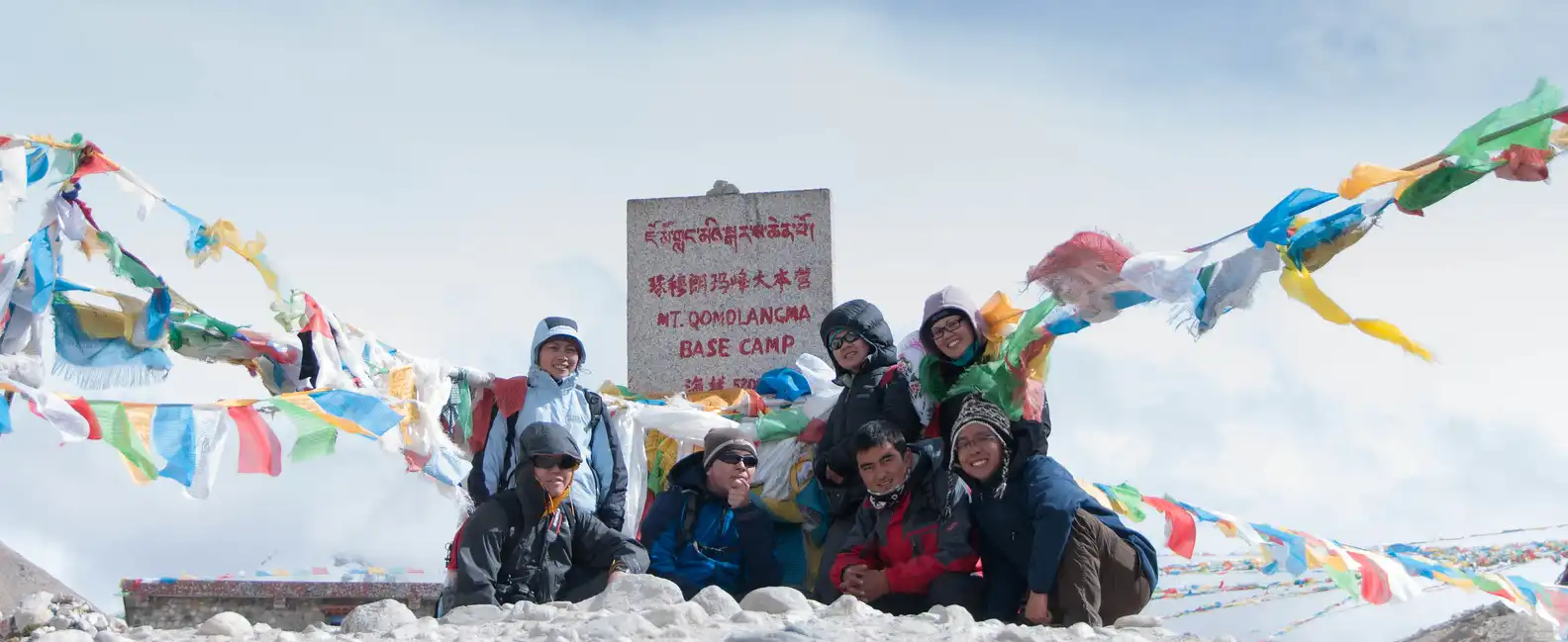
The North Base Camp in Tibet also came into being around the same period and has since witnessed numerous significant expeditions.
The Irresistible Lure of Mount Everest
- The Pinnacle of the Earth: Mount Everest, towering at a staggering 8,848 meters (29,029 ft), has captivated adventurers’ hearts for centuries. Its immense height and daunting challenges have made it the ultimate prize for mountaineers.
- The Ultimate Test: Climbing Everest tests physical and mental fortitude, pushing climbers beyond their limits and forcing them to confront extreme conditions.
- A Soulful Quest: For many, the climb is a spiritual odyssey, a search for connection with nature and a discovery of their inner resilience.
Base Camp: The Gateway to the Summit
- Vital Staging Ground: Base Camp serves as the indispensable launchpad for climbers, offering a space to acclimatize, make preparations, and initiate their summit attempts.
- A Hive of Activity: Teeming with life, Base Camp is the operational base for Sherpas, guides, and support crews committed to climber welfare.
- A Community Forged: A melting pot of cultures, Base Camp nurtures a deep camaraderie among climbers united by their shared love for the mountains.
- Scenic Wonderland: Even for those not aiming for the summit, Everest Base Camp boasts stunning vistas of the surrounding peaks and glaciers, making it a sought-after destination for trekkers and photographers.
Everest Base Camp: Altitude and Location in the Heart of the Himalayas
Everest Base Camp, the starting point for many aspiring mountaineers and trekkers, sits at a breathtaking altitude. Its location amidst the majestic Khumbu region of Nepal adds to its allure, placing it near other renowned landmarks that make the trek even more spectacular.
Everest Base Camp Height
- Elevation: Everest Base Camp is 5,364 meters (17,598 feet) above sea level.
- High Altitude Challenges: The significant elevation makes breathing difficult due to thinner air and reduced oxygen levels. Proper acclimatization is crucial for trekkers and climbers to avoid altitude sickness.
Geographical Location
Khumbu Region: The Khumbu region of Nepal, known for its stunning mountain vistas and rich Sherpa culture, cradles Everest Base Camp in its picturesque valley.
Sagarmatha National Park: The base camp falls within the boundaries of Sagarmatha National Park, a UNESCO World Heritage Site, further emphasizing its natural and cultural significance.
Proximity to Landmarks:
- Khumbu Glacier: The trek to Everest Base Camp takes you alongside the impressive Khumbu Glacier, a massive river of ice carving through the valley.
- Kala Patthar:
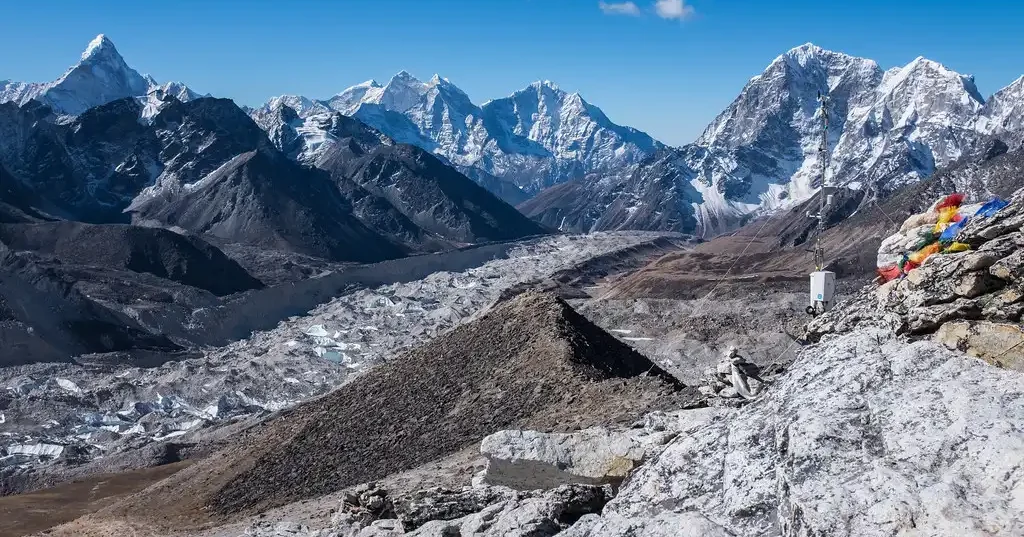
A popular viewpoint, Kala Patthar, at 5,643 meters (18,514 ft), offers unparalleled panoramic views of Mount Everest and the surrounding Himalayan giants.
- Namche Bazaar: The largest Sherpa village in the region, Namche Bazaar serves as a significant acclimatization stop and a gateway to the higher reaches of the Khumbu.
Everest Base Camp Photos
- Capturing Memories: Everest Base Camp’s dramatic landscapes and unique experiences provide ample opportunities for stunning photographs.
- Iconic Shots: From the prayer flags fluttering in the wind to the tents dotting the base camp against the backdrop of towering peaks, every frame tells a story of adventure and resilience.
- Respectful Photography: When taking photos, remember to be mindful of the local culture and environment. Always seek permission before photographing individuals and avoid disturbing the natural surroundings.
Everest Base Camp Trek for Beginners
Everest Panorama Trek
Everest View Trek
Trekking to the Foot of the World: Routes, Stops & Key Info
The trek to the base of Everest is an unforgettable odyssey through the heart of the Himalayas. We’ve laid out the classic routes, starting points, must-see stops, how long it takes, how tough it is, and the perfect times to go.
Classic Treks to Everest’s Base
- Lukla to Base Camp: This is the most popular choice, kicking off with a scenic flight to Lukla‘s Tenzing-Hillary Airport.
- Jiri to Base Camp: Alternatively, consider the Jiri to Everest Base Camp trek. This longer but less crowded route offers a gentler ascent and a more immersive experience of the local culture.
Unmissable Stops Along the Way
- Namche Bazaar: The biggest Sherpa village, perfect for adjusting to the altitude, with stunning views and bustling markets.
- Tengboche:
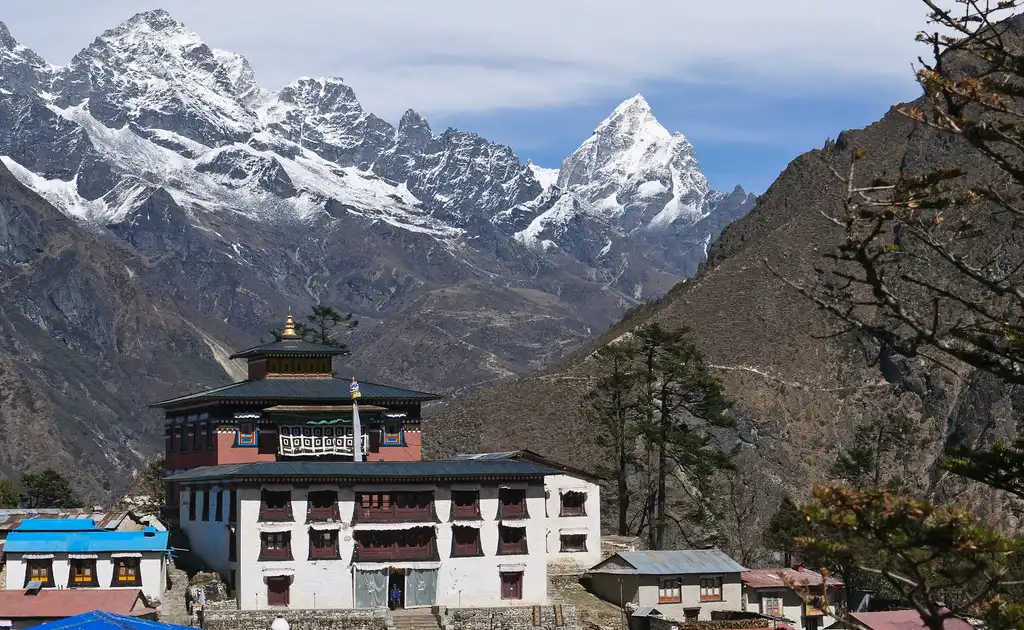
Home to the famous Tengboche Monastery, a spiritual haven offering panoramic views of Everest and Ama Dablam.
- Dingboche: Another vital spot to acclimatize, with chances for day hikes and exploring the Imja Valley.
- Gorakshep: The last stop before base camp, with access to Kala Patthar for incredible sunrise views of Everest.
Time & Effort
- Trek Length: The typical trek to Everest Base Camp and back takes 12-14 days, allowing for proper acclimatization and rest.
- Challenge Level: The trek is moderately challenging, demanding good physical fitness and mental resilience. Altitude sickness is a real risk, so acclimatization is vital.
Prime Trekking Times
Peak Seasons:
- Spring (March-May): Clear skies, rhododendrons in bloom, and pleasant temperatures.
- Autumn (September-November): Stable weather, fantastic visibility, and fewer fellow trekkers.
Off-Seasons:
- Monsoon (June-August): Trails can get slippery, and clouds might obscure the views.
- Winter (December-February): Bitterly cold and possible snow on the higher passes.
Everest Base Camp Camping: A Night Under Himalayan Stars
Camping at the base of Mount Everest is an unparalleled adventure, a unique blend of challenge, awe, and natural wonder. Whether you opt for the coziness of a tea house or the thrill of setting up your tent, sleeping under the starlit Himalayan sky is a highlight of any trek to Everest Base Camp.
Where to Stay at Base Camp
- Tea Houses: These classic lodges offer trekkers and climbers basic lodging and meals. You’ll find a warm bed, hot food, and a friendly atmosphere for connecting with fellow adventurers.
- Pitch Your Tent: Consider camping in your tent for a more intimate experience. This option brings you closer to nature and lets you soak in the serenity of this high-altitude setting.
What to Expect
- Basic Comforts: Both tea houses and campsites at Base Camp provide essentials like toilets and running water (availability might change depending on the season).
- Limited Power: Don’t count on much electricity, especially when camping. Bring a portable charger or power bank.
- Weather Watch: Conditions can change quickly, with strong winds and chilly temperatures. If you’re camping, pack warm clothes and a sturdy tent.
- Altitude Awareness: The high elevation can impact sleep and overall health. Stay hydrated, acclimatize properly, and listen to your body.
An Unforgettable Experience
- Stunning Vistas: Wake up to awe-inspiring panoramic views of Everest and the surrounding peaks.
- Starry Nights: The crisp mountain air makes for incredible stargazing.
- A Sense of Triumph: Camping at Base Camp is a testament to your resilience and adventurous spirit.
- One with Nature: Experience the raw beauty of the Himalayas and feel a deep connection to the natural world.
Tips for Camping at Base Camp
- Book Tea Houses Early: They can fill up fast in peak seasons. Reserve your accommodation in advance to ensure a spot.
- Partner with a Trusted Trekking Company: If camping, consider hiring a company that supplies tents, gear, and experienced guides.
- Pack for Warmth: Even in warmer months, temperatures can plummet at night. Bring a cozy sleeping bag, insulated jacket, and thermal layers.
- Respect the Surroundings: Leave no trace and practice responsible camping.
Everest Base Camp Photos: Capturing Himalayan Majesty
Nestled amongst the world’s most majestic peaks, the base camp at Everest offers a visual symphony that any photographer would dream of. The dramatic scenery, unique cultural moments, and the sheer vastness of the environment create countless opportunities for breathtaking photos.
Frame-worthy Sights at the Base of Everest
- Mountain Vistas: Capture the awe-inspiring sight of Everest and its towering neighbors, such as Lhotse, Nuptse, and Ama Dablam.
- The Khumbu Icefall: This dynamic, ever-shifting glacier is a captivating display of ice formations and seracs.
- Life at Base Camp: Document the vibrant energy of the camp, with its colorful tents, prayer flags, and the camaraderie among trekkers and climbers.
Tips for Getting the Perfect Shot
Ideal Times:
- Golden Hours: The soft light at sunrise and sunset paints the mountains with a magical glow.
- Clear Skies: Choose days with clear weather for optimal visibility and vibrant colors.
Top Photo Spots:
- Kala Patthar: This vantage point offers sweeping panoramas of Everest and the surrounding peaks.
- Tengboche Monastery: Capture the spiritual heart of the region with photos of the monastery and its surroundings.
- Trailside Wonders: Look for unique photo opportunities along the way, from prayer flags waving in the breeze to yaks transporting supplies.
Scenes to Capture
- Landscape Photos: Showcase the grandeur of the Himalayas with wide-angle shots of the mountains and glaciers.
- Portraits: Capture the spirit of the people you meet on your trek, from experienced Sherpa guides to fellow trekkers.
- Cultural Moments: Document the unique traditions and customs of the Sherpa people through photos of prayer wheels, monasteries, and daily life in the villages.
- Action Shots: Capture the excitement of the trek with photos of trekkers crossing suspension bridges or navigating challenging trails.
Gear and Considerations
- Camera Equipment: An ideal setup is a versatile DSLR or mirrorless camera with various lenses, including wide-angle and telephoto.
- Tripod: A tripod is crucial for sharp photos in low light or using more prolonged exposures.
- Spare Batteries: Cold temperatures can drain batteries quickly, so bring extras.
- Weatherproofing: Protect your gear from rain, snow, and dust.
- Respectful Photography: Always ask before photographing people and be mindful of cultural sensitivities.
The Everest Base Camp Experience: Where Dreams Take Flight
Reaching Everest Base Camp after days of challenging trekking is an achievement that etches itself into your memory, a testament to your physical strength, mental fortitude, and unwavering determination. The atmosphere at Base Camp, particularly during the climbing season, is a unique fusion of excitement, anticipation, and a shared sense of purpose.
The Base Camp Buzz
- A Thriving Community: The camp transforms into a bustling hub, uniting climbers, Sherpas, guides, and support teams from around the globe.
- A Kaleidoscope of Tents: A vibrant array of tents fills the landscape, each one symbolizing a team or expedition’s dream of conquering Everest.
- Spiritual Symbols: Prayer flags flutter in the wind, infusing the air with spirituality and hope.
- Shared Moments: Evenings at Base Camp often feature communal meals and storytelling, fostering a strong sense of community and connection.
Arrival: A Triumphant Moment
- A Feeling of Victory: Reaching Base Camp after days of navigating challenging terrain evokes a profound sense of accomplishment.
- Breathtaking Vistas: The first sight of Everest, reigning majestically above, leaves you in awe.
- An Emotional Stirring: The sheer scale of the mountains and the realization that you stand at the foot of the world’s highest peak triggers a wave of emotions – awe, humility, and gratitude.
- Celebration and Contemplation: While some celebrate the arrival with refreshments, others find peace in reflecting on the trek and its challenges.
Preserving the Memories: Photos at Base Camp
- A Photographer’s Haven: Base Camp is a visual treasure trove, offering countless opportunities for capturing stunning images.
- Landscape Shots: Frame the majestic peaks, the vast Khumbu Glacier, and the vibrant tents and prayer flags tapestry.
- Portraits of Resilience: Capture the determination and spirit of climbers and Sherpas as they prepare for their summit attempts.
- Moments of Joy: Document the shared happiness and camaraderie of reaching Base Camp with photos of fellow trekkers and newfound friends.
Everest Base Camp Nepal: A Journey of Culture and Trekking
Trekking to Everest Base Camp in Nepal is more than just a physical feat; it’s an immersion into a rich cultural tapestry. Discover the vibrant Sherpa traditions, explore ancient monasteries, and experience the local way of life. By carefully planning your trip and honoring local traditions, you’re setting yourself up for an unforgettable experience.
Embracing the Sherpa Way of Life
- Guardians of the Mountains: The Everest region deeply connects the Sherpa people to its landscape. Their resilience, mountaineering expertise, and welcoming spirit are legendary.
- Monastery Visits: Discover the serene world of mountain spirituality by visiting ancient monasteries, such as Tengboche, and experiencing firsthand the beauty of Buddhist rituals.
- Cultural Immersion: Interact with the locals, learn a few Sherpa phrases, and savor their traditional cuisine.
- Respectful Engagement: Approach cultural interactions with sensitivity. Ask permission before taking photographs, and remember that monasteries are sacred places.
Navigating Permits and Practicalities
- TIMS Card: All trekkers in Nepal need a Trekkers’ Information Management System (TIMS) card.
- Park Permit: You’ll also need a permit to enter Sagarmatha National Park, home to Everest Base Camp.
- Guides and Porters: Consider hiring a local guide or porter. They support the local economy and offer invaluable terrain, culture, and safety insights.
Trekking Responsibly
- Minimize Your Footprint: Pack out all trash and minimize your environmental impact.
- Respect Wildlife: Do not disturb animals or their habitats.
- Support Local Communities: Purchase local products and services to contribute to the economy.
- Stay on the Trail: Stick to designated trails to prevent erosion and protect delicate ecosystems.
Getting Ready for the Trek
- Physical Fitness: You must be in reasonably good shape to tackle the Everest Base Camp trek. Regular cardio and strength training are crucial.
- Packing Smart: Pack light, but ensure you have essentials like sturdy hiking boots, layered clothing, a warm sleeping bag, a first-aid kit, and a water purifier.
- Altitude Acclimatization: Ascend gradually and take rest days to avoid altitude sickness. Stay hydrated, listen to your body, and descend if needed.
- Health Check: Consult your doctor before the trek, especially if you have pre-existing health conditions.
Logistics
- Flights: Book your international flight to Kathmandu, Nepal’s capital, and your domestic flight from Kathmandu to Lukla, the gateway to the Everest region.
- Permits: Get your TIMS card and Sagarmatha National Park entry permit in Kathmandu or Lukla.
Tips for Conquering Everest Base Camp: Prepare, Stay Safe, and Make Memories
Am I dreaming of reaching the base of Everest? It’s an achievable goal, but careful preparation and wise choices are essential. These tips ensure a safe and triumphant trek to this legendary destination.
Gear Up for the Challenge
- Footwear: Invest in sturdy, waterproof hiking boots with excellent ankle support. Make sure to break them in before your trek to prevent blisters.
- Clothing: Layer up! Himalayan weather is unpredictable, so pack for everything from warm sunshine to snowy gusts.
- Backpack: A comfortable, well-fitted backpack is essential for carrying your gear. Choose the right size for your needs.
- Sleeping Bag: Stay cozy at high altitudes with a warm, lightweight sleeping bag rated for sub-zero temperatures.
- Trekking Poles: Trekking poles help reduce stress on your knees and offer stability on uneven terrain.
- Other Must-Haves: Remember sunscreen, sunglasses, a hat, gloves, a headlamp, and a first-aid kit.
Safety First
- Acclimatize Smartly: Ascend gradually and incorporate rest days to give your body time to adjust to the high altitude.
- Stay Hydrated: Adequate hydration is crucial. Drink ample water and avoid dehydrating beverages such as alcohol and coffee.
- Listen to Your Body: Don’t ignore any symptoms of altitude sickness. If necessary, descend to a lower altitude.
- Hire Local Expertise: Consider hiring a guide or porter. Their knowledge and support significantly enhance your safety and enjoyment.
- Get Insured: Ensure your travel insurance covers high-altitude trekking and emergency evacuation.
Anticipate the Experience
- Awe-Inspiring Views: Prepare to be captivated by the breathtaking beauty of the Himalayas, from towering peaks to cascading waterfalls.
- Physical Demands: The trek is challenging, with long days of hiking and steep climbs. Be ready to push yourself.
- Cultural Immersion: Encounter vibrant Sherpa villages, ancient monasteries, and prayer flags dancing in the wind.
- Unforgettable Memories: Reaching the foot of the world’s highest mountain is an experience you’ll cherish forever.
Other Adventures Await
- Gokyo Lakes Trek: Enjoy stunning vistas of the turquoise Gokyo Lakes and the Ngozumpa Glacier, Nepal’s most significant.
- Kala Patthar Sunrise: Add a pre-dawn climb to Kala Patthar (5,643 meters/18,514 feet) for breathtaking panoramic views of Everest.
- Everest Three Passes Trek: This challenging trek crosses three high mountain passes and rewards you with views of Everest, Lhotse, Makalu, and other peaks.
Conclusion: Embrace the Journey
Trekking to the base of Everest is a transformative experience that blends physical challenges, cultural exploration, and the awe-inspiring beauty of the Himalayas. It’s a chance to challenge yourself, forge a deep bond with nature, and make memories that will stay with you forever.
Whether you’re snapping breathtaking photos, marveling at the altitude, enjoying the unique camping experience, or simply soaking in the beauty of Nepal, this trek will leave an enduring mark on your soul. Are you ready to challenge yourself? Pack your bags and join us on an extraordinary trek to the roof of the world!

